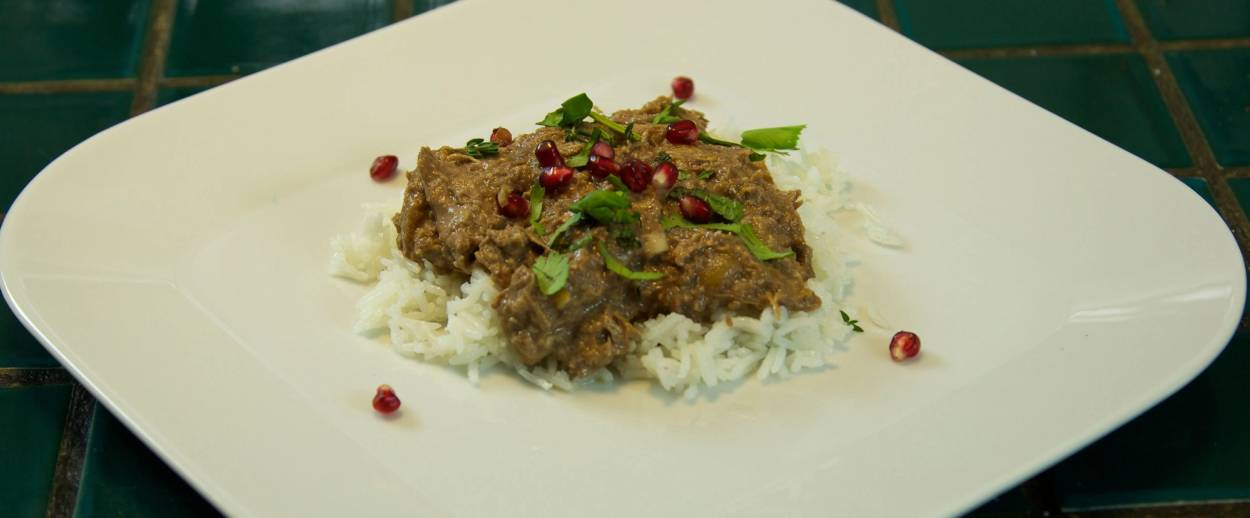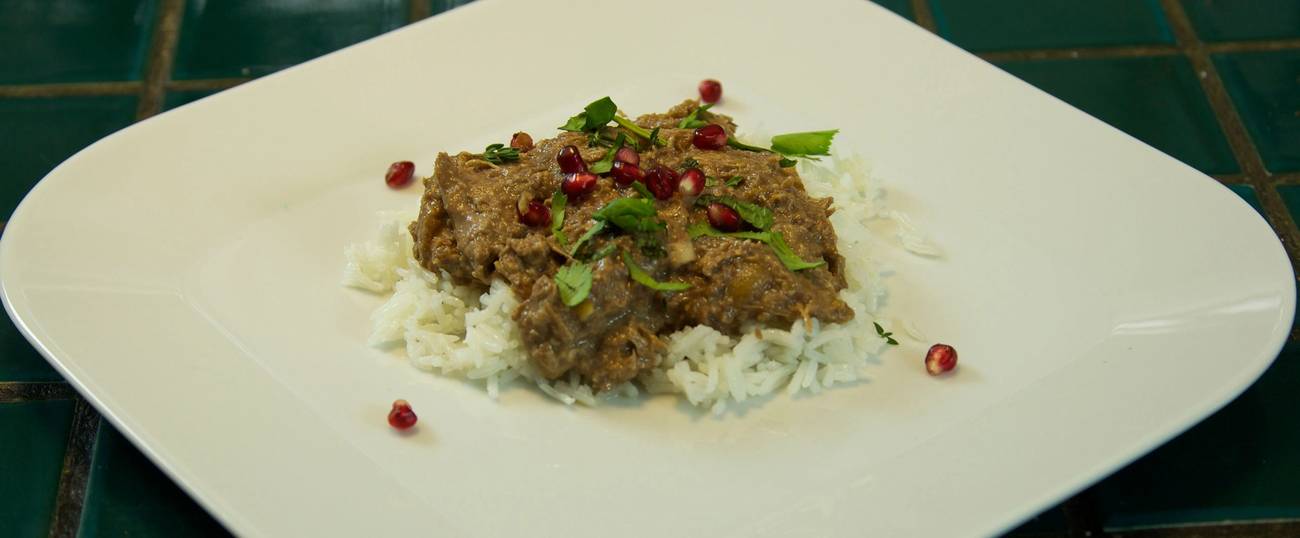How To Make Fessenjan, a Sweet and Savory Persian Stew
Pomegranates, turmeric, and ground walnuts evoke the flavors of the old Silk Road




In the vast Persian community of Los Angeles, Farrokh Maddahi is known as the “champion” of fessenjan, a traditional chicken-and-walnut stew. Likely named for an old Persian town called Fisinjan (according to historian and author Nawal Nasrallah), the dish—a delightful combination of sweet, savory, and tart, blending pomegranates, onions, and turmeric—is one of the glories of the old Silk Road. Today it is often served at weddings or special occasions, always over basmati rice.
Maddahi comes from Tehran and traces her roots to the Jews who were exiled to Babylon after the destruction of the First Temple. After settling in Babylon, many of these Jews set off for the Persian Empire, following the trade roads and encountering the key ingredients in fessenjan. Walnuts are the basis for the sauce, adding a little crunch; the Jewish version adds apricots and dates to sweeten it up and balance the tartness of the pomegranate molasses. (Maddahi’s recipe is here.)
Most Iranians don’t care that fessenjan often looks “muddy,” but I like to add a bit of color and serve the stew over rice, sprinkled with bright red pomegranate seeds and fresh green herbs. Traditionally a platter of assorted herbs, called sabzi khordan, is served with Persian meals such as this; instead, I incorporate the herbs into a salad to eat with the stew. As every Iranian says when making this dish, nosh-e jan—enjoy!
***
Joan Nathan is Tablet Magazine’s food columnist and the author of 10 cookbooks including King Solomon’s Table: a Culinary Exploration of Jewish Cooking from Around the World.